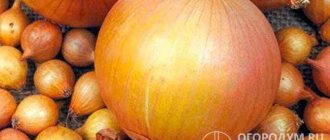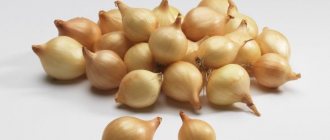Description of the Aqua variety
Rose variety Aqua has average resistance to diseases and adverse conditions. The crop is almost free of powdery mildew, but can become infected with black spot.
The rose is in the sixth frost resistance zone, but many gardeners note that the variety does not tolerate frost quite well; after winter its shoots are often frozen over. The shrub blooms repeatedly and for a long time. The variety blooms from June to the end of October.
| Color | Pink, lilac |
| Number of flowers per stem | 1 |
| Aroma | Weak |
| Flower size | 8-10 cm |
| Bush height | 80-100 cm |
| Bush width | 50-60 cm |
| Frost resistance | Frost-resistant, zone 6 |
| Powdery mildew resistance | Very good |
| Black spot resistance | Average, may get sick in unfavorable season |
| Rain resistance | Average, in rainy weather not all buds open |
| Bloom | Reblooming |
| Bush shape | Erect |
| Flower | Dense double |
Characteristics
- According to reviews, an Aqua bush planted in the fall will bloom the next year, but do not rush to load it, it is best to save the young plant until next year, when it, having become stronger, will show real possibilities;
- The frost resistance of the rose corresponds to USDA zone 6 (according to the classification of the US Department of Agriculture), that is, the bush is able to overwinter at -23.3°C. Numerous reviews confirm good resistance to the declared temperature. But there are also opposite reviews, complaining about freezing of the bush even in warm regions;
- immunity is rather average. If the resistance to powdery mildew is generally not bad, then numerous complaints about black spotting indicate Aqua’s poor resistance to this disease;
- The flowers' resistance to humidity is low. There is information that even short-term exposure to rain leaves stains on the petals, and unopened buds can even rot;
- Aqua tolerates heat with temperatures rising to 40 °C, which has often happened in the south in recent years, just as poorly. In such conditions, flowering is sparse, the plant develops at a slow pace;
- the most suitable conditions for our heroine to show the best results are warm (but not hot) and dry weather, with a temperature of about 25 °C;
- Color fastness to intense light is low; in bright sun the color fades. Therefore, in the southern regions it is better to plant roses in areas protected by diffuse partial shade during the midday period. But the capricious flower also cannot tolerate dense shadow. Those who grow Aqua for cutting use one trick to preserve the rich color of the buds. Rose growers put bags of thick paper on the flowers that have not yet bloomed, allowing them to preserve the juicy pink color until the moment of cutting. This trick is also suitable for an ordinary gardener, especially during the rainy season;
This is interesting: Hybrid tea rose Empress Farah: photo and description
- the aroma is weak, but very delicate, memorable - fresh, with subtle notes of lemon balm, pear and vanilla;
- A cut rose can remain attractive in a vase for more than 10 days.
Appearance and features
Rose Aqua is a bright representative of hybrid cut tea varieties. The culture is painted in a delicate pink color, which becomes lilac over time. The brightest flowering occurs in autumn; before retiring, the rose delights with a riot of colors.
The shades of the buds are unique, even on bushes growing next to each other. The bud has many dense petals, the filling is dense, one flower can have up to 40 petals. The bud shape is classic, goblet-shaped. The tips of the petals are slightly curled, the core is hidden.
The Aqua variety shrub is tall and straight. One large flower grows on a slender stem. The shoots are green, strong, dense, do not bend. The advantage of this variety is the complete absence of thorns; this makes caring for the crop more convenient, and cut flowers will never hurt the delicate hands of ladies. The foliage on the shoots is glossy, light green, and jagged. Aqua roses have almost no scent.
Flower propagation
Like other varieties of hybrid tea roses, Aqua is propagated by cuttings. The optimal time for cutting branches is the first half of June. You need pieces about 15 cm long with 3 buds. They are buried 3 cm into the soil and then covered with a cap made from a cut plastic bottle. Every day the lid is opened to water the cuttings, and then closed back. The optimal time for forcing green shoots is 3 weeks.
Note! If rooting is successful, new bushes should be planted at the end of August.
Diseases
Does the rose have a gray-white coating or brown balls on the leaves? Methods to combat the disease.
Powdery mildew
Black spots of a round shape have appeared on the leaves of the rose, what should I do, how can I save the plant?
Black spot
The rose is sprinkled with yellow powder, the leaves and stems crack and die, how to get rid of the disease?
Rust
Has a gray coating appeared on the rose? This is gray rot that needs to be gotten rid of as soon as possible.
Gray rot
The Aqua variety needs to be planted in fertile soil, black soil and loam are suitable, the second option needs to be fertilized before planting the seedling. If the soil is chernozem, it is enough to loosen it and water it.
Do not forget about drainage at the bottom, which can be made from expanded clay, sand or crushed stone. The acidity of the soil should be neutral, pH = 5.6-6.5. Excessively wet areas are not suitable, as the roots of the seedling will rot in them.
It is necessary to maintain a distance between plants of 80 cm, between rows - 2 m. For a seedling, it is necessary to prepare a spacious planting hole so that the roots are located freely in it.
Planting is recommended in the fall from September to mid-October. The plant will have time to take root and begin growing in the spring. Spring planting is acceptable after the snow has completely melted. After planting, the soil is well compacted and watered with warm water.
The plant is fed seasonally. In spring, mulch from manure or peat is added to the soil. Fresh manure cannot be used for feeding, as it burns young, immature roots. It is recommended to use rotted manure.
Spring feeding consists of applying nitrogen fertilizers, which can be of natural or artificial origin. In the summer, once every month and a half you need to add a mineral complex.
Phosphorus and potassium fertilizers stimulate good bush growth. Rose Aqua is often attacked by insects, so it needs to be treated with special preparations and insecticides.
Watering should be regular, especially during dry periods. The need for watering is checked by the top layer of soil; if the soil is dry at a distance of five centimeters deep, it is time to water the rose.
You need to pour water at the root before sunrise, avoiding drops from getting on the buds and leaves, this contributes to the appearance of fungal diseases. The next day after watering, you need to loosen the soil.
If weeds appear near the rose, they need to be removed. Pruning is carried out in the spring before the buds appear. Since the Aqua variety is susceptible to freezing, after a harsh winter you need to cut off all damaged shoots.
Plant nutrition
As a top dressing, slurry is most often used, which contains the necessary chemical elements, as well as beneficial bacteria. It is the latter that convert compounds inaccessible to plants into a form that is perfectly absorbed by them.
This is interesting: Peony roses - planting, care and growing at home (130 photos)
Feeding is done once every 2 weeks, and during the summer season only 3-4 times (from the end of June to August). Mullein must first be prepared, for which it is placed in a barrel with water in a ratio of 1:3 1.5-2 weeks before use. Chemical fertilizers are also added to this mixture: potassium sulfate and double superphosphate (calculated at 15 g per 10 liters of water).
The finished infused concentrate is diluted with water in a ratio of 1:10. Furrows are made around the bush at a distance of 35-40 cm, into which water is first poured, and then the resulting composition with mullein is poured. 3-5 liters are added to each bush, then the furrows are filled with soil or sand, the next day the soil should be loosened.
Also in the spring, complex mineral fertilizer is applied along with ammonium nitrate, and in the autumn, fertilizing with potassium and phosphorus is done.
Pests
Mole crickets have appeared in the garden, this is very dangerous for your flowers, find out how to get rid of the pest
Medvedka
Several sources of foamy liquid have been observed on the rose bush; this is a dangerous pest.
Slobbering Penny
Autumn pruning is needed to rejuvenate the bush; at this time, overgrown and old branches are cut off. You need to cover the bush for the winter with reliable covering material. You can use special caps or self-constructed structures. After snow falls, you need to create a snowdrift over the bush. With the arrival of spring, you need to gradually open the bush.
Roses and perfumes
Charming pink aromas of love have been used to create perfumes since ancient times. Nowadays, several hundred varieties of roses are successfully used to create perfumes or eau de toilette. They are used to make oil, water, or a solid extract called “rose concrete.”
The recognized capital of perfume is Paris. France has been cultivating rose plantations specifically for the creation of such products for several centuries.
“Aqua Allegory Rose” is one of the fragrances in the Guerlain line, which was first introduced to the public back in 1999. When creating this perfume series, its founder, Jean Paul Guerlain, dreamed of expressing his passionate love for natural garden scents.
“Aqua Allegory Flora Rose” is one of the bright floral fragrances from the Guerlain series. It was released in 2013 and combined the scents of roses, red berries, iris and musk.
Many women love very feminine and delicate flower scents. Therefore, these notes are present in almost every perfume product.
Options for using roses
The Aqua variety of rose is most often grown commercially. The variety is used for bouquets and retains freshness for up to 10 days. The shrub is used in single plantings in the middle of the site, near the facade of a building or fence.
The rose is suitable for mixed borders; it is clearly visible among dense thickets. The variety is suitable for ridges and mixborders. Combines with annual crops in purple, white, and blue shades. The rose can be planted next to miniature coniferous trees, other roses, and various herbs.
Shelter for winter and spring work
In autumn, when the temperature begins to drop below zero, young rose bushes must be covered. Otherwise, they will freeze and may die. For protection, dry soil or sand is used, which is used to hill up the bush to a height of 30 cm, and spruce branches are also placed on top.
In the spring, as soon as fresh shoots begin to appear, all shelters are removed in stages, 8-10 times. It is best to do this in cloudy weather or in the evening so that the sun's rays do not damage the shoots. After removing the last layer, it is recommended to cover the young branches again with spruce branches from the sun.
Immediately after removing the covering layer and freeing the branches, the bush should be pruned.
Useful tips
- Roses of the Aqua variety must be cut off in the first year of flowering, because they take away all the energy from the young plant and do not provide strength for growth and rooting;
- Any type of fertilizing should be applied under the bush, on pre-moistened soil;
- The Aqua rose variety reacts very sensitively to excessive soil moisture at the roots. The buds immediately lose the brightness of their color and cease to be attractive. If the place with the rose is excessively wet, it is necessary to replant the plant.
Preparing for landing
It is preferable to buy bushes ready for planting in specialized stores. There they will make sure that the roots of the plants are wrapped in dense material with a peat mixture. Such a seedling is stored for three months.
You can plant Rose Aqua in the spring, although experienced gardeners recommend planting this plant in the fall before the first cold weather sets in, when the ground is still quite warm. Over the winter they will take root under cover, and with spring warming they will actively begin to grow.
IMPORTANT
When choosing a place to plant a seedling, you need to remember about humidity - this is the enemy of the rose, which provokes the formation of diseases and spoils the appearance of the plant. Give preference to sunny, open, well-ventilated places where cold wind currents, to which this variety is sensitive, do not pass. An acceptable option would be an area protected from the north by a building or trees.
Before planting, preparatory work must be done. Soil plays one of the main roles in the cultivation of any plants, including Aqua roses. This variety must be planted in neutral soil with a pH of 5.8 to 6.5. Reclamation is carried out if the soil does not have this characteristic. Hybrid tea roses require more nutrients than other types of this plant. The soil must be fertile or fertilized with peat or humus; too acidic soil must be limed to neutral. Loamy soil is improved with rotted manure and sand. However, stale manure should be taken for these purposes, since otherwise it will have a negative effect on the delicate roots of the rose. Then the soil is well shed. The hole for the plant is dug based on the size of the root system so that the roots are freely located without bending or damaging. Before planting, you need to immerse the root ball in water for 10–20 minutes to make it stronger.
Pros and cons of the Aqua variety
Advantages:
- Classic roses with rich colors;
- Change of color during flowering;
- Long flowering and preservation of freshness after cutting;
- Good resistance to powdery mildew;
- Normal frost resistance;
- Slender, strong stems
- Can be grown in greenhouses and gardens.
Flaws:
- Does not tolerate rain well;
- Susceptible to black spot;
- Difficult to grow in regions with a lack of sunny days.
Watering and flowering
Rose "aqua" needs frequent regular watering, 3-4 times a week is enough. In this case, it is necessary to ensure that the soil does not become waterlogged and water does not fall on the leaves. The best time for watering is early in the morning, after which the soil should be well loosened to a depth of 4-5 cm. This will provide air access to the roots. After watering, it is necessary to mulch to avoid overheating.
Excessive flowering in the first year of the plant’s life is not recommended, as this will result in the formation of too large a root system. Small buds that appear in the first half of summer should be removed immediately. In August, you can leave 1-2 flowers, which will allow the plant to prepare for the cold weather.











